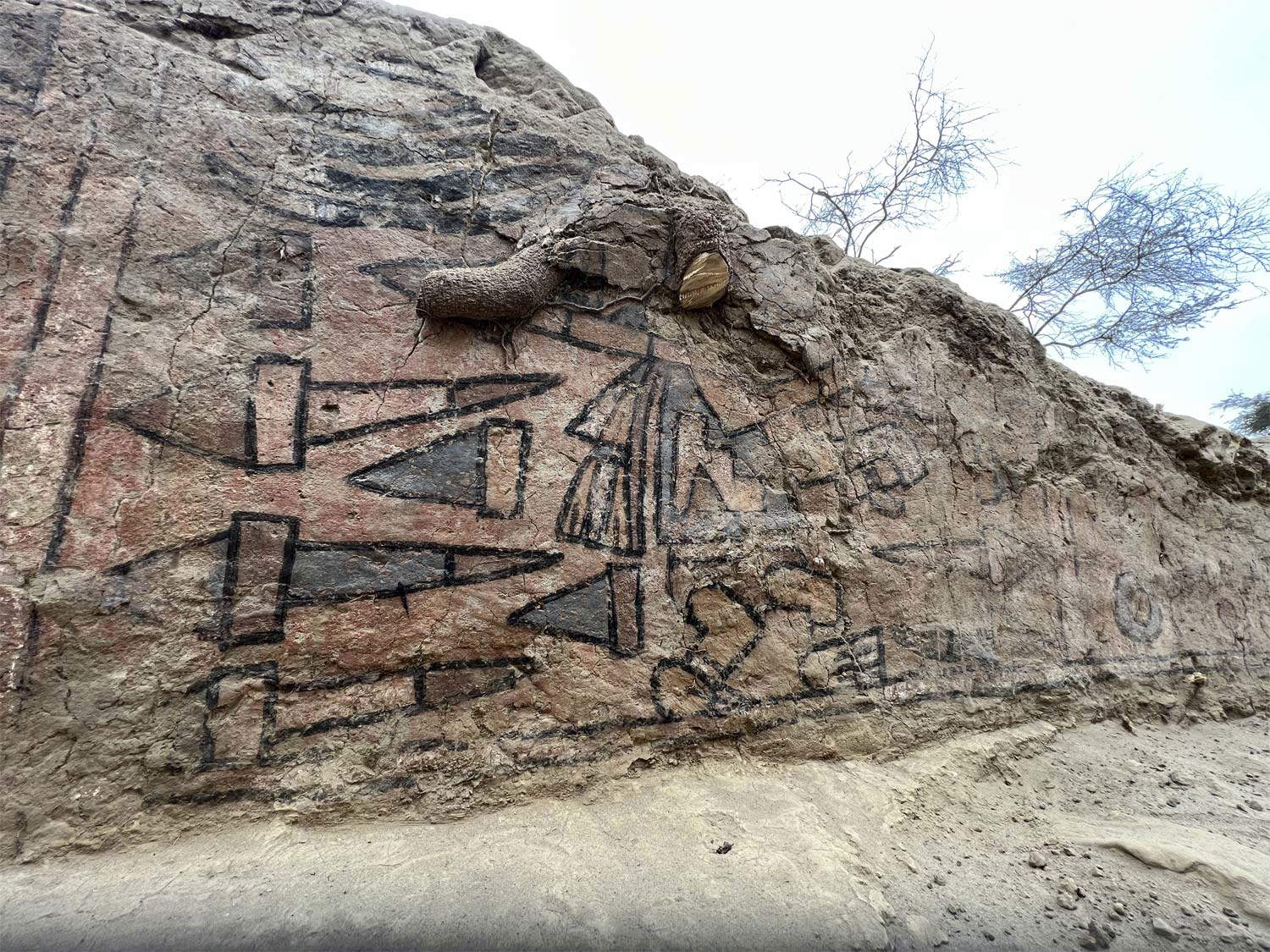Peru, Swiss PhD student discovers rare pre-Columbian wall painting
Important discovery in Peru, in the province of Lambayeque, where Swiss archaeologist Sâm Ghavami, a doctoral student at the University of Fribourg, has found a pre-Hispanic wall painting, 30 meters long, that was thought to have disappeared. The work, dating back about a thousand years, is part of the Huaca Pintada temple, built by the Moche, an Andean civilization that occupied the area from the 1st to the 8th century. It is in excellent condition: the exceptionality of the discovery lies precisely in the fact that it is very difficult to unearth wall paintings from the pre-Columbian era that are so well preserved.
However, this is not entirely new to scholars: in fact, there are photographs taken in the early twentieth century that are the earliest records of this work. They were taken by the German ethnologist Hans Heinrich Brüning, but he never published the photographs (we do not know why), and they were not discovered until 1978 by an American researcher, Richard Schaedel. Archaeologists then learned of Huaca Pintada’s existence, but no one then went to probe the site, in the belief that nothing was left, partly because, Ghavami explained, the area where Huaca Pintada’s temple is located has often been looted by antiquities traffickers.
The paintings, Ghavami explained, were covered with soil, and the discovery took four years of work, also complicated by the fact that the site is on private property and the owner has not always been willing to accommodate archaeologists. The decisive insight came from an old photograph of the wall paintings that Ghavami discovered this year and allowed him to discover the probable location of the work.
Originally, the archaeologist says, the painted wall featured “a long procession of finely dressed warriors heading toward a central deity with ornithomorphic features, the same attributes that would later be characteristic of the rise of the Lambayeque culture. Above these panels were drawn the meanders of a river that brings to the valley’s inhabitants its fertile water and its many fish.” According to the scholar, the paintings bring together elements of two cultures: the Lambayeque, who developed on the northern coast of Peru between the 8th and 14th centuries, and the Moche.
We do not know the significance of the work. Now, however, the results of the discovery will be analyzed, the artifacts cataloged and archived in the repositories of Peru’s Ministry of Culture, and an exhibition on the subject will be held at the Brüning Museum in Lambayeque.
 |
| Peru, Swiss PhD student discovers rare pre-Columbian wall painting |
Warning: the translation into English of the original Italian article was created using automatic tools. We undertake to review all articles, but we do not guarantee the total absence of inaccuracies in the translation due to the program. You can find the original by clicking on the ITA button. If you find any mistake,please contact us.




























